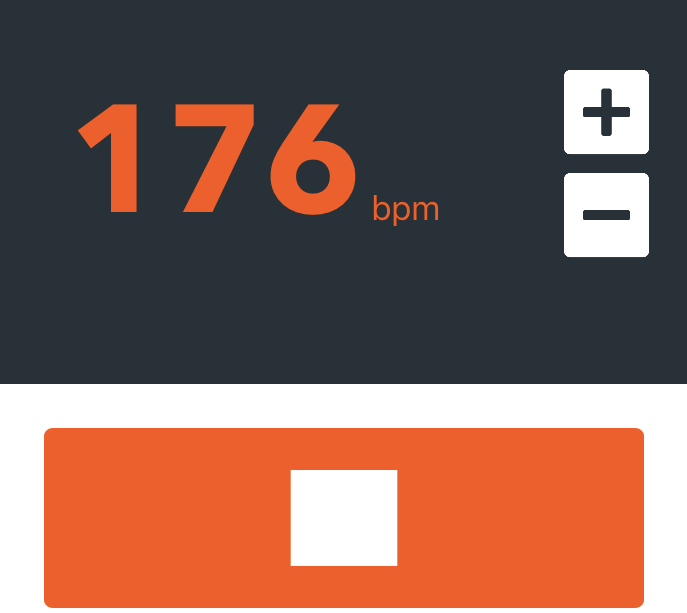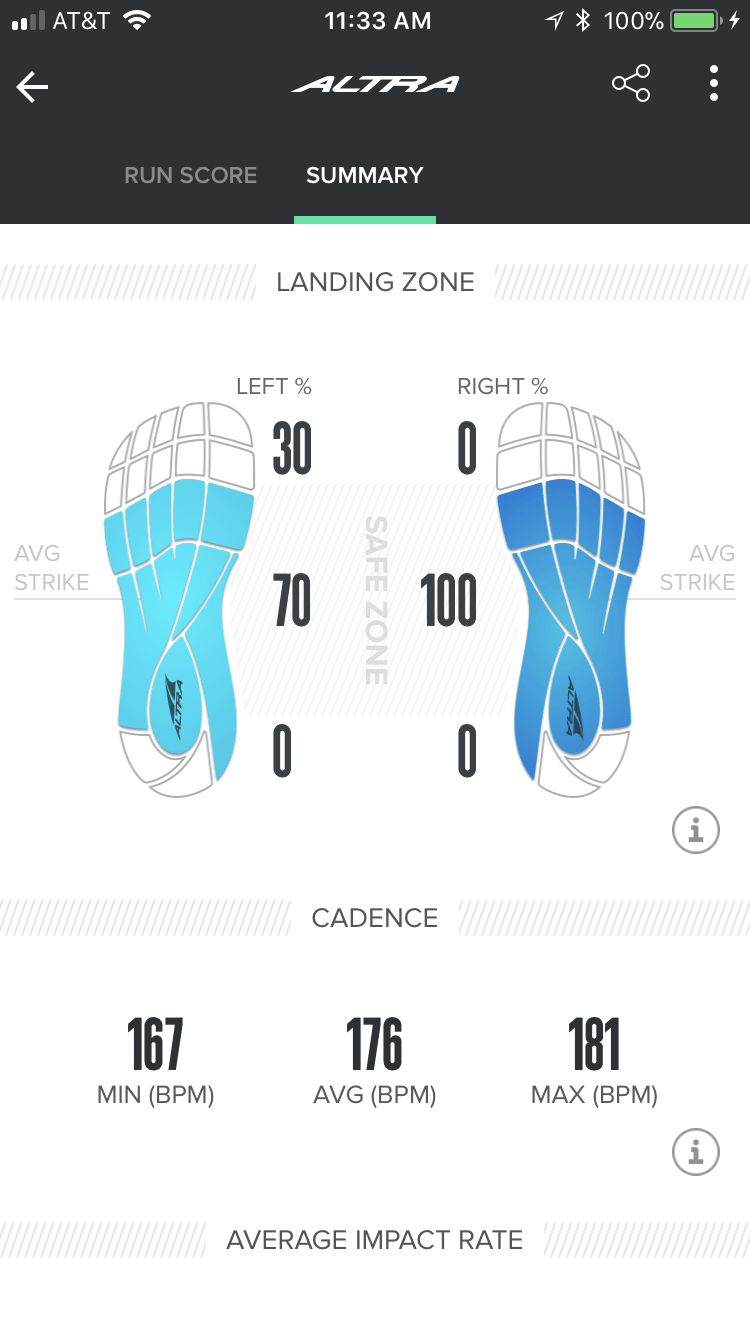If you have been following my return to running, you have heard me talk about improving my cadence. You may have wondered why I care so much about this number.
In a perfect world, we would all diligently start each run with a nice long warm up followed by 15 minutes of well executed run drills. Then we would run with beautiful form.
Back in the real world, however, we don’t want to “waste” that valuable time on silly drills when we could be running. And, unless we are blessed with naturally perfect form, we hammer in bad habits day after day with no regard for what it might mean to our longevity as runners.
It is hard to change habits. I struggle to dedicate the appropriate time to form, and I know all of my athletes do. So, I try to focus on the little things that are easy to do but can still make a difference.
Enter cadence. In the realm of running form improvement, cadence is the low hanging fruit.
Cadence is simply the rate of turnover of your feet and is discussed in terms of SPM (strides or steps per minute, the number of times BOTH feet hit the ground in a minute) or RPM (revolutions per minute, the number of times ONE foot hits the ground in a minute). You will see both numbers used, SPM is simply 2 x RPM. Sometimes you will also see BPM, which is used in lieu of SPM. Confused yet? Don’t worry, it’s fairly obvious when you get into it!
If you are a runner, you have likely heard that the perfect cadence is 180 SPM. This number is taken from an observation by the running coach Jack Daniels that elite runners ran at 180 SPM or higher. There is nothing wrong with 180 SPM as a target for many of us, but it is not the one acceptable cadence. It is not THE perfect cadence. Many elite runners hold a higher cadence at speed, and many of us non-elite runners may never even reach 180. What is important is improvement and finding what works best for you.
But cadence is just a number. It’s the form improvement that happens when we focus on improving that number that matters:
It is really hard to heel strike at a high cadence.
Heel striking is a common running fault. A heel striker over strides and lands on his heel with his leg extended too far in front of his body. This effectively causes braking in the stride. It is like pressing the gas and the brake at the same time. Inefficient. Heel striking also transmits large impact stresses up the kinetic chain of the leg, which can lead to injury.
Most heel strikers have a fairly low cadence (typically sub 160 SPM); they often appear to have a long, loping stride. Simply focusing on increasing cadence can force the heel striker into a more efficient mid foot landing, closer to his center of mass. Why? It is nearly impossible to heel strike at a higher cadence: You simply don’t have enough time for each step to get the leg that far out in front of you!
Your feet spend less time on the ground during each stride.
Every moment your foot spends in contact with the ground is essentially loss of forward momentum. By increasing your cadence and therefore improving your stride dynamics, you can reduce the amount of time your foot must spend on the ground moving from landing to push off.
Note that it is normal that your cadence will increase as you speed up. You have two ways to run faster: increased stride length and increased cadence. Most of us don’t have unlimited stride lengths, so we have no choice but to increase cadence to go faster. This does not mean that you cannot practice improving your cadence at lower speeds. You can, and you should, work on cadence at all paces.
It takes time to make any change. You have to work slowly, but consistently, at improving your cadence.
You don’t need much to make the commitment:
Figure out your normal cadence.
In the middle of a run on flatter ground, count the number of times your right (or left, they both work) foot hits the ground in 30 seconds. Do this several times and take an average. Multiply this by 2. That’s your RPM. Example: your average right foot count for 30 seconds is 40. Multiply this by 2 and you get 80 RPM. Multiply 80 RPM by 2 and you get 160 SPM. That’s your baseline.
Download a metronome app.
I love the metronome because it is really hard not to run to a beat. I use the RunTempo metronome app ($0.99 in the app store), but any app or device that beeps at you at a given cadence works. If you hate the metronome, find some songs that have a beat that matches your target cadence.
Note that there are now shoes like my Altra IQs, running watches and other gadgets that will feed you tons of running data, including cadence. Use these if you have them, but I encourage you to still use the metronome approach. That audible cue is hard to beat. Ha, no pun intended!
Start by doing short intervals at the beginning or within your run at SLIGHTLY higher than your normal cadence.
For example: Your normal cadence is 160 SPM. Begin by adding 4 x 1 to 2-minute intervals at 162-164 SPM to each run. You can do these throughout the run to help keep resetting your brain. You are essentially trying to retrain your muscle memory, so be patient. Sometimes running slightly downhill makes it easier to increase your foot speed.
Once 162-164 becomes easy and feels more normal, increase your interval cadence to 164-166. And so on.
Remember there is no perfect number. If you improve your cadence by 2 SPM, that’s still improvement. You don’t have to reach any preordained cadence. And even when you reach a cadence that is very efficient (let’s say 175 is now your new normal), training at higher cadence intervals is still very beneficial. It will give you access to more speed when you need it.
Your finishing kick will thank you.




Recent Comments